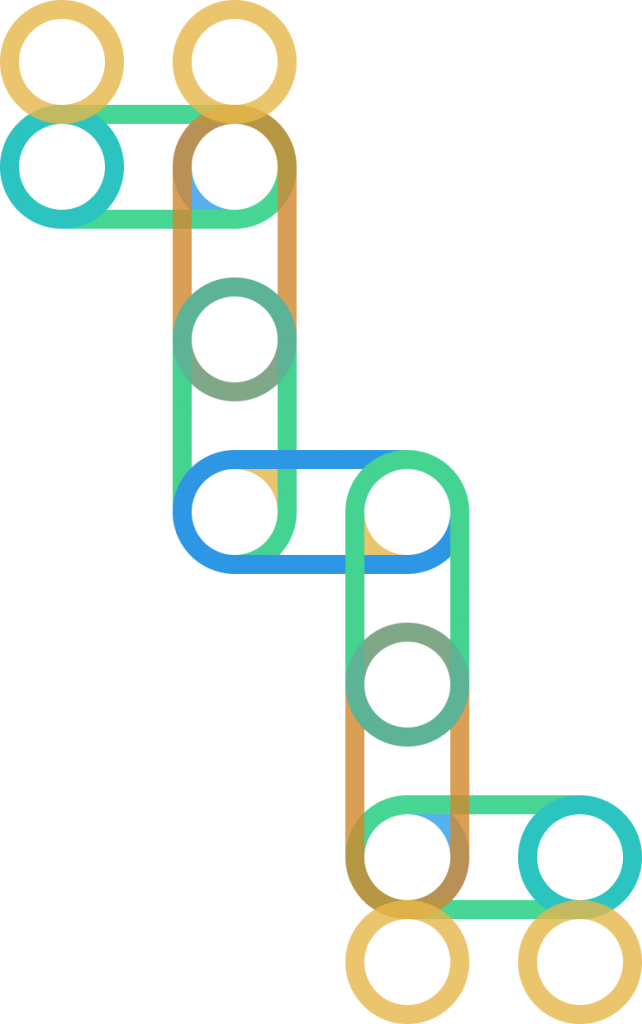
Plastics For Change connects waste collectors with global brands through fair trade principles, creating cascading positive effects across the entire PET value chain while transforming environmental challenges into economic opportunities.

Sometimes we just have to look elsewhere for inspiration. In the southern Indian city of Bangalore, a quiet revolution is reshaping how we think about plastic waste. It’s a transformation that came from observing, learning and copying from other systems, in particular the systems of fair trade agriculture and clothing manufacturing.
While much of the world still views discarded PET bottles as an environmental problem, Andrew Almack and his team at Plastics For Change see something different: a powerful lever for systems change that can simultaneously address environmental degradation, poverty, and corporate sustainability.
“The informal sector is responsible for 58% of all the plastic that enters the circular economy globally. In emerging economies, it’s a much larger percentage,” Almack explains. “It’s estimated some 15 to 20 million people are at the base of the supply chain and are doing all the hard work of picking up the discarded plastics and getting it into the system.”
This insight—that millions of informal waste collectors form the foundation of global recycling—has driven Plastics For Change to pioneer a systems approach that is transforming the entire PET value chain from collection to consumption.
Reimagining the entire system
The conventional approach to plastic waste has long been fragmented: brands purchase from manufacturers who source from recyclers who buy from traders, with little visibility or accountability regarding where materials originate. This disconnected system creates environmental harm, social exploitation, and market inefficiency.
Plastics For Change has reimagined this system from the ground up, creating an integrated approach that connects waste collectors, local scrap shops (known in India as Kabadiwalas), aggregators, recyclers, and global brands like The Body Shop and L’Oréal.
“When we first show up to a Kabadiwalas and we say, there’s this Fair Trade Standard, they’re like, what? Like, what are these terms and conditions?” Almack recounts. “So we had to take them on this whole journey and a lot of nudges, a lot of gamification to say the more progress you make towards the standard, the more it’s going to be worth your while.”
This journey toward systems change begins with understanding the interconnected challenges that prevent sustainable transformation:
- The human rights challenge: Waste collectors face exploitation, unstable income, and dangerous working conditions
- The infrastructure challenge: Many regions lack the facilities to process collected materials efficiently
- The market challenge: Brands lack incentives and verification systems to prioritize ethically sourced recycled content
By addressing these interconnected challenges simultaneously, Plastics For Change creates ripple effects that transform the entire system.
Starting with the most vulnerable point
Systems change often begins at a system’s most vulnerable point. For the plastic recycling ecosystem, that means focusing on the waste collectors who form the foundation of the entire value chain.
“The main thing is that the waste collectors, they need to get paid on time and full each day, fair consistent price,” Almack emphasises. “What happens generally in the supply chain is they’re waiting for the buyer up the supply chain to settle in cash… the waste collector doesn’t have savings… So then you have a situation that can evolve into different forms of indenturement.”
This insight—that delayed payment often leads to exploitation—has shaped Plastics For Change’s approach to financial systems. By ensuring waste collectors receive prompt payment, they prevent the cascading negative effects of financial insecurity that can lead to child labor, health crises, and intergenerational poverty.
A recent living wage study conducted across 473 informal waste workers in three geographies revealed that those in Plastics For Change’s supply chain had, on average, a 22% increase in their income. While Almack acknowledges this is “a good start,” he sees it as just the beginning of a more comprehensive transformation.
Strengthening the middle of the chain
The next ripple effect occurs within the often-overlooked middle of the supply chain—the local scrap shops and aggregators who connect waste collectors to recyclers. By bringing these intermediaries into the fair trade system, Plastics For Change transforms what was once a purely transactional relationship into a collaborative partnership.
“We unite them in these trade unions, or we call them a Fair Trade Federation, celebrating their successes, their contribution on the social and environmental front,” Almack explains. This community-building approach creates mutual accountability and shared purpose among stakeholders who previously operated in isolation.
The organisation also deploys “a large team of social additionality workers” who conduct needs assessments at the base of the supply chain. These interventions address education, healthcare, financial literacy, and access to existing social service schemes—creating a holistic support system rather than just a purchasing relationship.
This systems thinking recognses that sustainable change requires addressing interconnected needs: waste collectors can’t maintain consistent collection if their children lack education or if health issues prevent them from working.
Transforming the downstream market
The final ripple effect emerges at the brand and consumer level, where Plastics For Change has pioneered an approach to market transformation based on transparency, certification, and data-driven decision-making.
“The brands that have done that and that have communicated it well have gained extraordinary market share because consumers are not really trusting brands if they just make a self-published claim,” Almack observes. “In the North American market… only one in five or 20% of consumers will believe a claim from a brand if it doesn’t come with data and third-party verification.”
This insight has led Plastics For Change to implement a comprehensive certification approach. Since introducing the world’s first Fair Trade Certified recycled plastic in 2019, they’ve expanded to include multiple third-party certifications—Social Plus, OBP (Ocean Bound Plastic), GRS (Global Recycled Standard), EN 15343, REACH, SEDEX, and B Corp.
For partner brands, this certification ecosystem provides both marketing advantages and regulatory compliance. “This is not just like something for marketing,” Almack notes. “This is something for avoiding regulatory penalties. There’s mandatory use of recycled plastic in many geographies… globally the mandate is to go from 6% use of recycled content in all the OECD countries now to 25%.”
The system ripples further through technological innovation. Plastics For Change provides partner brands with “a live dashboard where they can see real-time, all the buy-sell transactions that are happening with the waste collectors, the timestamp log of all the social additionality interventions that are happening.”
This transparency transforms not just purchasing decisions but the fundamental relationship between brands and their supply chains, creating accountability where once there was opacity.
Measuring the ripple effects
Systems change requires new metrics that capture interconnected impacts across environmental, social, and economic dimensions. Plastics For Change tracks several key indicators:
Environmental impact: Last year alone, they recycled 23,000 tons of material (75% PET), with plans to reach 40,000 tons this year. Their life cycle assessments show that choosing recycled over virgin plastic saves between two and four tons of CO2 per ton of material.
Social impact: Beyond the 22% income increase for waste collectors, the organisation tracks educational access, healthcare utilization, and financial inclusion among participating communities.
Economic impact: Partner brands experience increased market share when they effectively communicate their verified sustainability claims, particularly among younger demographics entering the market with new purchasing power.
Systems resilience: Perhaps most importantly, Plastics For Change measures the stability and sustainability of the system itself. “So far, once a brand has got behind this, so far they’ve never stopped. So we have a 100% [retention rate],” Almack reports.
The next frontier of systems change
As Plastics For Change enters its sixth consecutive year of 3X growth, Almack sees both challenges and opportunities ahead. The organisation is diversifying across different plastic types beyond PET and expanding geographically, while maintaining their core theory of change.
“Our core theory of change, the way we dissect the problem of plastic pollution, is there’s three things that need to happen to prevent plastic pollution,” Almack explains. “The first one is someone needs to pick that plastic up off the ground… Next, the plastic needs to go through the—we need to bring the infrastructure in place to create the value from it… And then the third part of the equation is creating that demand.”
This three-pronged approach represents systems thinking at its most effective—addressing interconnected challenges simultaneously rather than tackling isolated problems. The ripple effects from these interventions continue to transform how we think about plastic waste, from an environmental problem to a resource for creating sustainable livelihoods.
For systems change agents, designers, and impact investors, Plastics For Change offers a powerful model of how thoughtful intervention at critical leverage points can transform entire value chains. Their journey from a crowdfunded startup in 2015 to a $15 million organisation in 2024 demonstrates that systems change, when implemented with care and insight, can create value across every dimension of sustainability.
As global recycling mandates continue to increase and consumers increasingly demand verified sustainability claims, the ripple effects from this systems approach will likely extend even further, potentially reshaping how we view not just plastic waste but resource consumption more broadly.
To hear more about her insights and ideas about the importance of PET-powered ecosystem restoration, check out the full conversation on the adaPETation® Podcast.
LOOKING FOR MORE INSPIRATION?
The future of plastics is being redefined, and you can be a part of it.
Listen to the full podcast with Andrew Almack to understand the positive changes to complex systems being brought about by Plastics for Change.
Your support can usher in a new era where plastic, once the problem, becomes an integral part of the solution.
Share it
Useful Links
THE HISTORY OF PLASTIC
Throughout the history of plastic, PET has been crucial in keeping food fresh with lightweight and durable packaging solutions that have helped reduce food waste for almost a century. Learn all about the invention of plastic and the important role it has played feeding people and saving the lives of humans and elephants in the adaPETation® timeline of the history of plastic.





